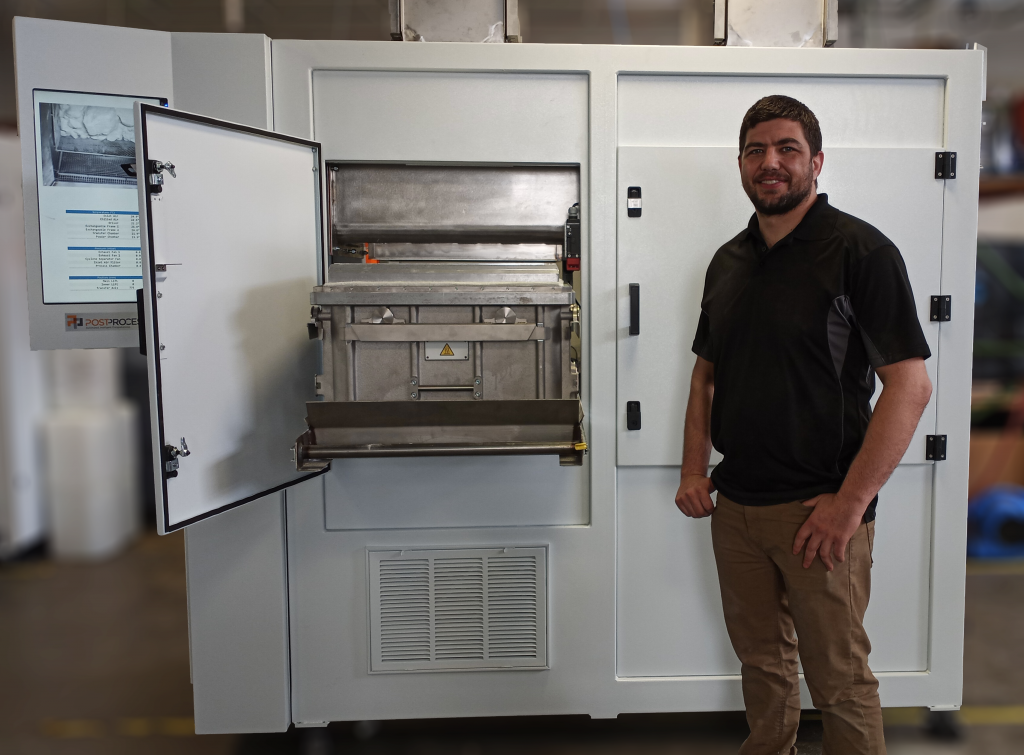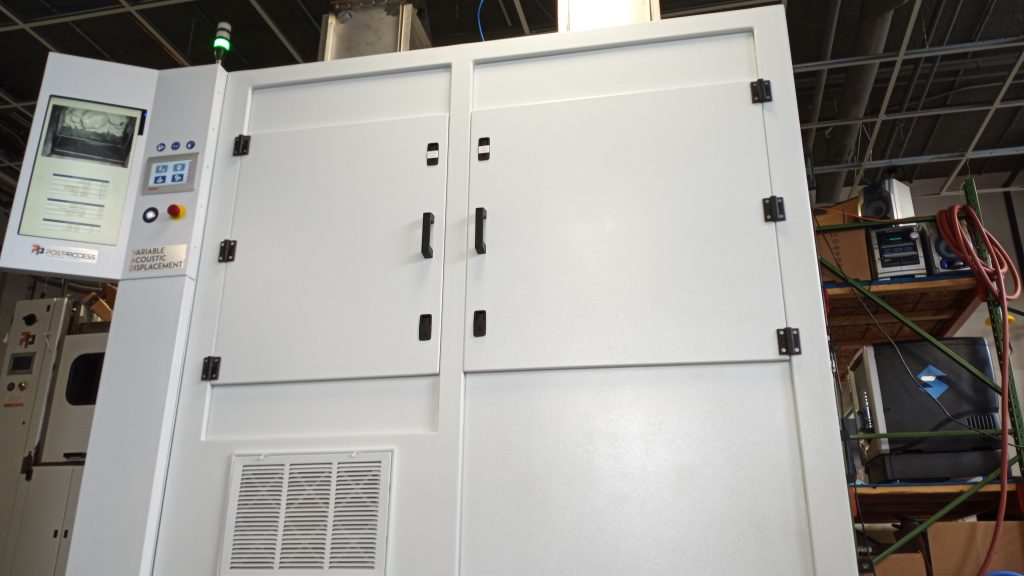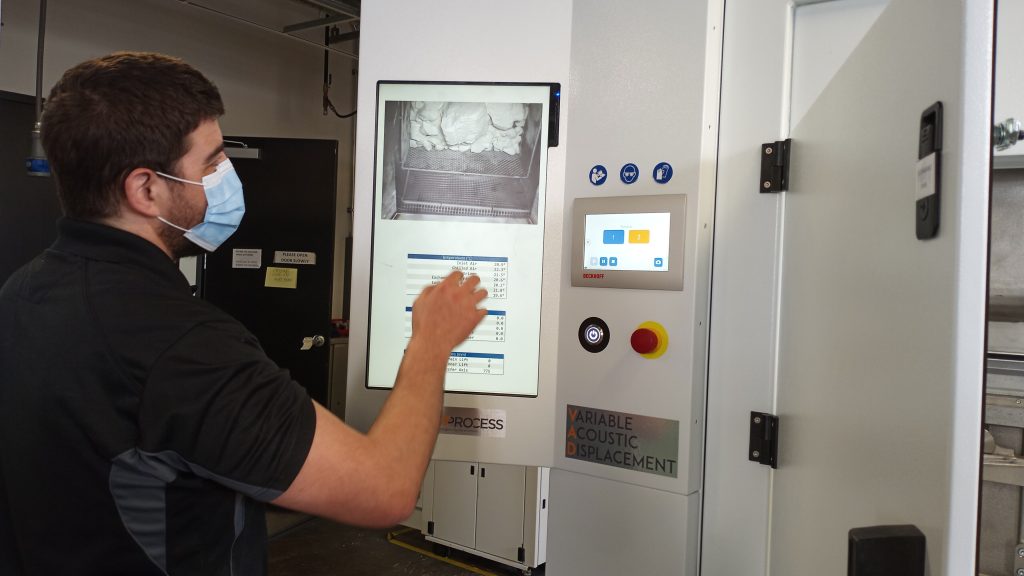PostProcess Technologies, a developer of automated post-processing systems for 3D printed parts, has delivered its first Variable Acoustic Displacement (VAD) powder removal system to a customer in Europe.
First introduced in October 2020, VAD is PostProcess’s fifth technology family. The patent-pending process is specially designed to depowder parts fabricated via selective laser sintering (SLS) and multi-jet fusion (MJF). The customer, an unnamed consumer brand, sought the technology out when looking to make its SLS 3D printing workflow safer and more scalable, with end-to-end data connectivity.
The shipment itself came following a period of extensive customer validation, prompting PostProcess to proceed with a global commercial launch.
Bruno Bourguet, Managing Director of PostProcess Technologies International, stated, “As our novel powder removal technology is now rolling out to early access customers, we are keeping our sights set not only on enabling a fully digitized workflow but also optimization for sustainability, which includes employee safety. Depowdering is a messy and unsafe process as it stands today, and we are proud to bring safer working conditions and simpler powder reuse to MJF and SLS users across the globe.”

Manual depowdering: a bottleneck
Without VAD, a typical SLS workflow involves a manual gross depowdering (decaking) stage, a process that relies entirely on the productivity of a human. To clean the unused powder off a batch of 3D printed parts, a manufacturing technician usually has to use a vacuum pack or high-pressure air blaster to get into every nook and cranny. As well as being time-inefficient, this often leads to high breakage rates for complex part geometries and exposes workers to harmful airborne particles.
It’s the lack of digitization that makes it difficult to scale manual depowdering to meet the needs of a high-volume manufacturing facility. In essence, it ends up being a major bottleneck in the polymer part 3D printing workflow.

Variable Acoustic Displacement
The VAD process is intended to remedy these issues. The technology combines mechanical energy with intelligent thermal and displacement techniques to decake batches of SLS and MJF parts with virtually no human intervention. Specifically, the system uses software-tuned frequencies to identify part geometries, all while emitting sound waves to non-destructively remove loose powder with pressure.
PostProcess’s VAD systems also come complete with closed-loop control, whereby decaking parameters such as temperatures and displacements are automatically adjusted in real time. The system even features a set of video and infrared cameras for process monitoring purposes.
Customers that opt for the process can expect to drastically reduce their depowdering cycle times, all while improving part-to-part consistency and minimizing part breakages. The fully-enclosed system also keeps hazardous particles contained, keeping employees and the environment safe.
Leveraging the company’s proprietary CONNECT3D® software platform, users are able to operate and monitor several of the company’s systems remotely. VAD can be used alongside any of PostProcess’s other technologies, which include systems built for high-volume resin removal, support removal, and surface finishing. With each of its technology families, PostProcess Technologies aims to usher in industrialization by facilitating true high-throughput additive manufacturing.

Nominations for the 2021 3D Printing Industry Awards are now open, have your say in who is leading the industry now.
Subscribe to the 3D Printing Industry newsletter for the latest news in additive manufacturing. You can also stay connected by following us on Twitter, liking us on Facebook, and tuning into the 3D Printing Industry YouTube Channel.
Looking for a career in additive manufacturing? Visit 3D Printing Jobs for a selection of roles in the industry.
Featured image shows PostProcess Technologies Project Engineer Craig Ostrum and the VAD system. Photo via PostProcess Technologies.


